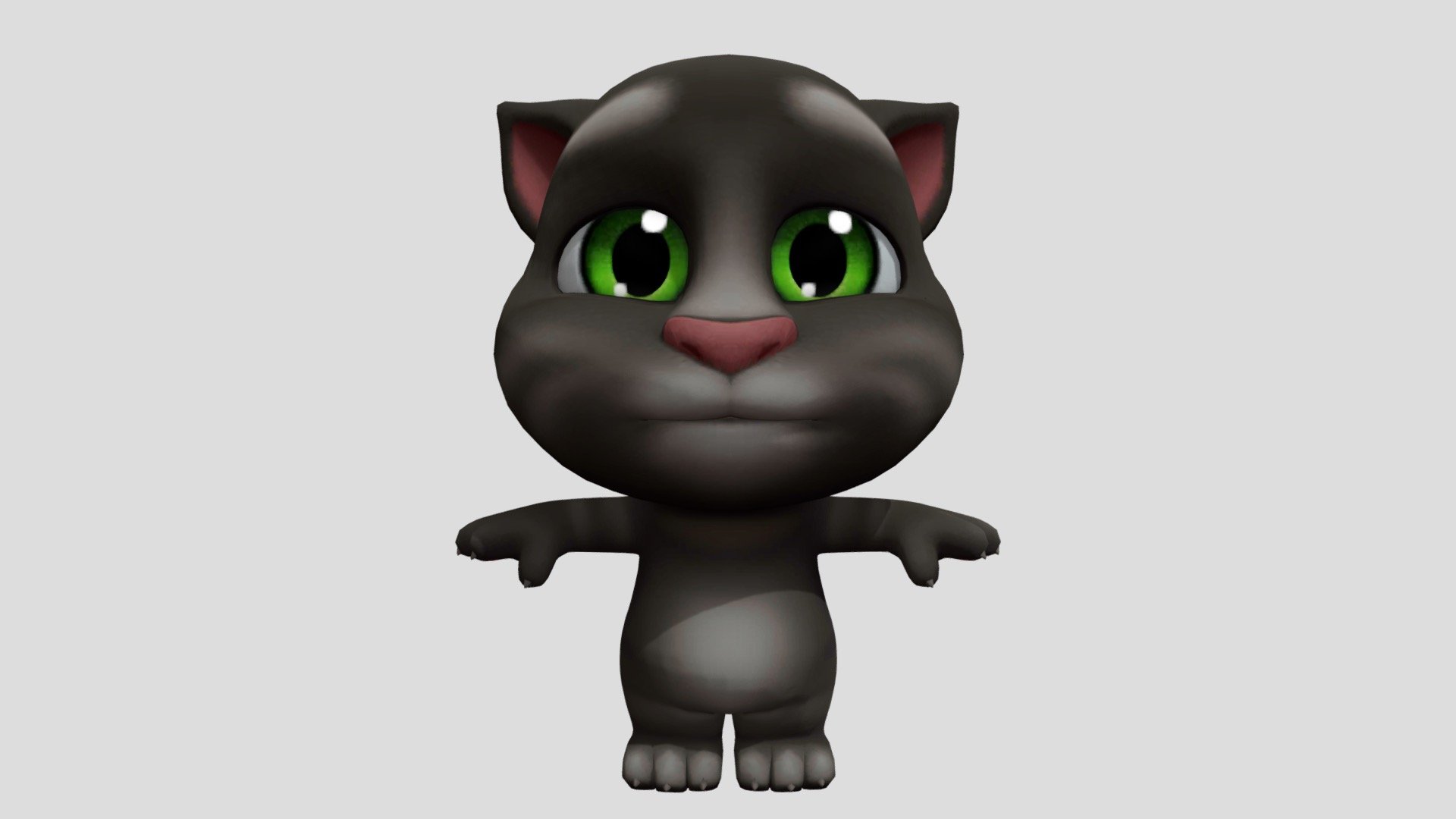
In an increasingly competitive digital landscape, where fleeting trends often dominate, few franchises manage to capture and sustain global attention like Outfit7’s Talking Tom & Friends. What started as a simple idea for a character-based app has blossomed into a multimedia powerhouse, achieving more than 18 billion downloads as of June 2022. This impressive longevity and unparalleled reach speak volumes about its engaging formula and consistent innovation, making it a case study in how to build an enduring digital empire.
From its humble beginnings in Ljubljana, Slovenia, the franchise has continually evolved, expanding its universe from basic interactive apps to complex virtual pet simulations, dynamic action games, and a vibrant array of animated web series. This journey is not just a testament to clever development, but to a deep understanding of user engagement and the power of charismatic characters. It’s a narrative of ambition, iteration, and ultimately, monumental success in the mobile entertainment sector.
For anyone looking to understand the mechanics behind a truly successful digital product, or simply curious about the captivating world that has charmed billions, this deep dive offers an unparalleled look. We’re going beyond the surface to explore the key milestones, the visionary minds, and the strategic decisions that transformed a quirky talking cat into a global icon, proving that sometimes, the simplest ideas can lead to the most extraordinary outcomes. Prepare to uncover the layers of innovation that define the Talking Tom & Friends phenomenon.
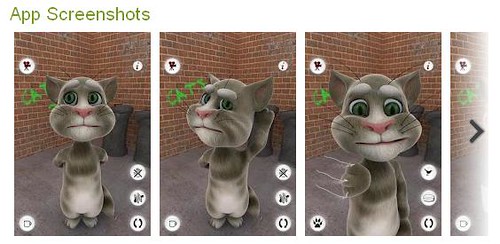
1. **The Visionaries Behind the Voice: Outfit7’s Genesis and Early Ambitions**
Every colossal success story starts with a spark, and for Talking Tom & Friends, that spark was ignited by the Slovenian high school students Samo and Iza Login. Having pursued computer science in college, the duo harbored a clear ambition to break into the burgeoning app business. Their journey began in October 2009, fueled by a significant personal investment: they had meticulously saved $250,000, which amounted to over €172,000 at the time, from their prior work with local IT companies.
This substantial initial capital allowed the Logins, who even legally changed their surname to ‘Login’ to align with their professional aspirations, to establish a dedicated office in Ljubljana. They weren’t alone in this venture; six of their friends joined them, forming the core team that would lay the groundwork for what was to become a global phenomenon. It was a testament to their early conviction and the collaborative spirit that defined their startup phase.
However, the path to success was far from linear. Their initial forays into the mobile market were met with considerable challenges and proved to be unsuccessful. They experimented with a diverse range of concepts, including a soccer app, a travel guide focused on Iceland, and even a “wealth affirmation” tool designed to share financial mantras. These early attempts, while not yielding the desired results, provided invaluable lessons and refined their understanding of the mobile app ecosystem.
It was after these initial setbacks that Samo Login, initially disinclined to enter the highly competitive gaming sector, had a pivotal idea. He conceived of an app centered around a single, engaging character. This strategic pivot, moving away from more generic utility apps to a character-driven experience, would ultimately become the defining moment for the franchise, setting it on a trajectory towards unprecedented success and establishing Outfit7 as a notable player in the mobile entertainment industry.
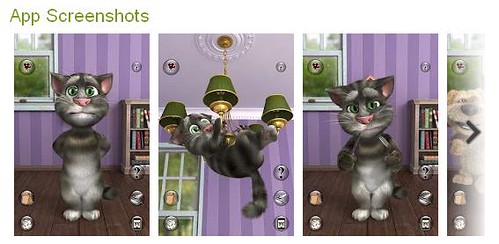
2. **From Pixels to Personality: The Birth of Talking Tom Cat**
The transformation of an abstract idea into a tangible, interactive character is where the magic of Talking Tom truly began. Samo Login’s vision for a character-based app led him to a rather unconventional but highly effective solution for character development: he purchased an existing 3D model. This decision circumvented lengthy and costly character design processes, allowing for rapid prototyping and deployment, a crucial advantage in the fast-paced app market.
The chosen model, a $90 feral cat simply named “CAT CARTOON,” was acquired from the 3D-model website TurboSquid. It had been originally created and uploaded by 3D artist Andrey Kravchenko on January 31, 2004. This off-the-shelf asset, seemingly unremarkable at first glance, was about to be given a new lease on life, transforming into one of the most recognizable digital characters globally.
Interestingly, this same “CAT CARTOON” model had seen prior use in other contexts. It was retextured with orange fur for a character named Léo le Chat and also appeared in various animation reels and commercials for entities like OnlyACall.co.uk and Flynn Paff. This versatility underscored the quality of the original model, providing a strong foundation for the Talking Tom character.
Samo Login personally took on the task of renaming the model to “Talking Tom,” imbuing it with the personality that would soon captivate millions. He then provided this re-christened model, along with a background asset named “Alley Corner with Graffiti,” to his dedicated team of developers. These developers meticulously coded the animations and, crucially, the innovative talkback feature that would become the hallmark of the app, giving life to Tom and setting the stage for a revolution in mobile interactive entertainment. It’s worth noting that both these original assets were eventually replaced in 2016 with original assets, aligning with the franchise’s evolving aesthetic and newer entries.
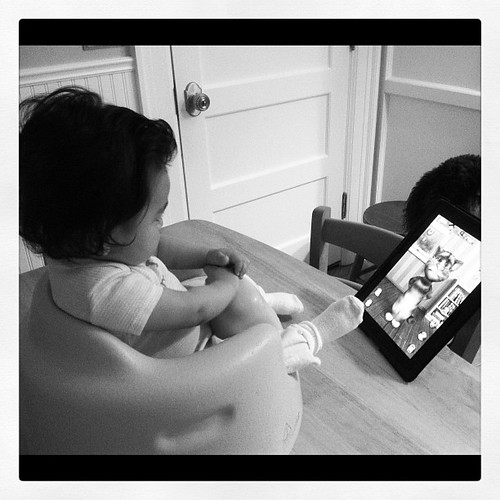
3. **The Original Voice: Talking Tom Cat’s Trailblazing Launch and Mechanics**
The moment of truth arrived on June 26, 2010, with the release of the original Talking Tom Cat app by Outfit7. This launch was not just another app entering the marketplace; it marked the debut of a novel concept that would redefine mobile entertainment. Available initially for iOS, the app quickly distinguished itself with its unique blend of interactivity and charm, setting a new standard for character-based digital experiences.
The core mechanics of Talking Tom Cat were deceptively simple yet profoundly engaging. Users could interact with Tom, a grey tabby cat, in various ways: tickling him, poking him, and playing with him. These tactile interactions provided immediate feedback, making the digital character feel responsive and alive. This direct engagement fostered a sense of connection between the user and Tom, a critical factor in its widespread appeal.
However, the undisputed star feature, the innovation that truly set Talking Tom apart, was its ability to repeat anything the user said. This talkback feature, reproducing phrases in a distinctively higher-pitched voice, wasn’t just a gimmick; it was an incredibly personal and humorous form of interaction. It transformed the smartphone into a playful mirror, allowing users to hear their own words reflected back in an amusing, often adorable, manner. This simple yet brilliant mechanic was a viral sensation in the making.
The success was immediate and exponential. The app’s intuitive design, coupled with the sheer novelty of having a character mimic your speech, resonated with a massive global audience across all age groups. It wasn’t merely a game; it was an interactive companion, a source of endless amusement that users could carry in their pockets. The launch of Talking Tom Cat wasn’t just a step for Outfit7; it was a giant leap for mobile interactive entertainment, laying the foundation for a franchise that would soon boast billions of downloads and a sprawling multimedia empire.
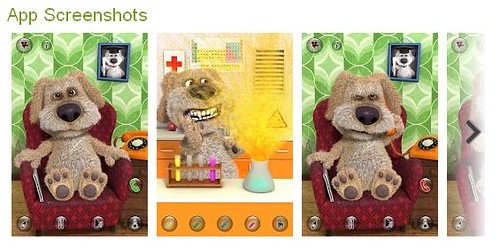
4. **Building the Core Crew: The Iconic Personalities of Tom, Angela, and Ben**
No successful franchise thrives on a single character alone, and the Talking Tom & Friends universe is a prime example of strategic character expansion. While Talking Tom Cat was the trailblazer, the franchise truly cemented its appeal by developing a vibrant ensemble, with Talking Tom, Talking Angela, and Talking Ben emerging as the undisputed core of this digital family. Each character was crafted with distinct personalities and interests, broadening the appeal and opening new avenues for interactive storytelling.
Thomas, or “Talking Tom” as he’s affectionately known, remains the title character and the anchor of the franchise. Described as the “world’s most popular cat,” Tom is a wisecracking, adventure-seeking grey tabby. In his games, he continues to be a fully animated, interactive 3D character, responding to tickles, pokes, and, of course, repeating user speech in his signature high-pitched voice. His adventurous spirit and playful demeanor make him universally relatable, embodying the fun and interactive essence of the franchise.
Joining Tom is Talking Angela, who quickly became an equally beloved figure, particularly noted as Tom’s girlfriend. Angela is depicted as a white cat with a refined passion for travel, singing, fashion, and dancing. Her character adds a layer of glamour and aspirational lifestyle to the franchise, appealing to a different facet of the audience. Her presence allowed for the development of apps like *Tom’s Love Letters* and *Tom Loves Angela*, further enriching the narrative and relational dynamics within the Talking Friends universe, and expanding the scope of character-specific engagement beyond simple repetition.
Completing this foundational trio is Benjamin, or “Talking Ben,” Tom’s best friend. Ben offers a contrasting personality to Tom’s adventurous nature; he is described in his game as “a grumpy dog and a chemistry professor.” His character gravitates towards inventing and all things science and technology. This intellectual, albeit sometimes irritable, persona provides opportunities for educational or problem-solving narratives, creating a dynamic interplay with Tom’s more spontaneous character. Together, Tom, Angela, and Ben formed the bedrock upon which the entire expansive Talking Tom & Friends franchise would continue to build and innovate, creating a rich world that encourages sustained user interaction and loyalty.

5. **New Faces, New Adventures: The Introduction of Ginger, Hank, and Becca**
As the Talking Tom & Friends universe expanded its global footprint, so too did its cast of captivating characters. Recognizing the power of fresh perspectives and diverse personalities, Outfit7 strategically introduced new friends, each bringing their own unique flair and opening up new narrative and interactive possibilities. Talking Ginger, Talking Hank, and Talking Becca emerged as vital additions, solidifying the ensemble and enriching the franchise’s storytelling potential.
Talking Ginger, a mischievous ginger tabby kitten, quickly endeared himself to audiences. His character adds a youthful, playful, and often chaotic energy to the group. In the *Talking Friends* web series, he is portrayed as Tom’s nephew, establishing familial ties, while in the later *Talking Tom & Friends* web series, he is reimagined as Tom’s neighbor. This flexibility in his background showcases his adaptability within the franchise, consistently serving as a source of lighthearted antics and an appeal to younger demographics, particularly in apps designed around his routines, such as *Talking Ginger* and *Talking Ginger 2* which focused on getting him ready for bed or celebrating his birthday.
Benjamin “Talking Ben”‘s circle expanded significantly with the introduction of Talking Hank. Hank, a white dog adorned with blue spots—one prominently on his right eye, another on his tail tip, and a third on his rear—made his debut in December 2014 with the premiere of the *Talking Tom & Friends* web series. His distinct hobby is watching sitcoms, a relatable trait that adds a touch of everyday life to the fantastical world of talking animals. As Tom’s roommate, Hank provides a steady, often humorous, presence, his laid-back nature contrasting with Tom’s more active pursuits, offering diverse character dynamics for storytelling and play.
The newest face to join the main crew, Talking Becca, is a grey rabbit introduced in the *Talking Tom & Friends* web series. Like Angela, Becca is an aspiring singer, adding another layer of creative talent and ambition to the group. Her presence not only diversifies the animal types within the main cast but also provides opportunities for new musical narratives and character interactions, potentially creating a friendly rivalry or collaborative dynamic with Angela. These additions demonstrate Outfit7’s continuous commitment to refreshing the franchise, ensuring a dynamic and ever-evolving world that keeps billions of users engaged and eager for new adventures with their favorite talking friends.
Read more about: The Phenomenal Journey of ‘Talking Tom & Friends’: How a Simple App Became a Global Multimedia Empire
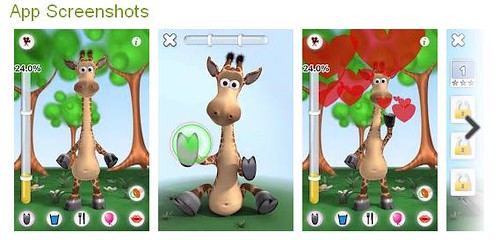
6. **A Fond Farewell: Remembering the Early, Discontinued Talking Friends**
While the core cast of Tom, Angela, Ben, Ginger, Hank, and Becca now dominate the Talking Tom & Friends narrative, the franchise’s history is rich with characters who, for various reasons, have since been retired or featured in a more limited capacity. These former friends represent an earlier, more experimental phase of Outfit7’s development, each contributing to the foundation of the franchise before making their graceful exit from the main spotlight. Their existence highlights the iterative nature of app development and the constant refinement of a successful formula.
Among these early characters was Talking Gina, a distinctive giraffe who was exclusively featured in the *Talking Gina* app and made appearances in the *Talking Friends* web series. Her unique animal type stood out, showcasing the initial breadth of Outfit7’s creative vision for interactive characters. Similarly, Talking Pierre, a green parrot, had his moment in the spotlight within the *Talking Pierre* app and the *Talking Friends* web series, offering another avian perspective to the digital menagerie.
Other memorable, though now retired, characters include Talking Larry, a bird featured in a few apps including *Talking Larry*, and Talking Santa, a legendary human character who brought festive cheer to a few apps, notably *Talking Santa*. These characters often capitalized on specific themes or seasonal appeals, demonstrating Outfit7’s early strategy to diversify its offerings and tap into various niches within the mobile market.
Further rounding out this diverse early lineup were Talking Baby Hippo, a light purple hippopotamus featured in the *Talking Baby Hippo* app, and Talking Harry, a hedgehog, who also had his own dedicated apps. The franchise even ventured into more fantastical or unusual characters with Talking Rex, a dinosaur, Talking Roby, a golden/silver robot, Talking John, a bacterium, and Talking Lila, a fairy. While these characters may no longer be actively developed or widely available, their contributions were instrumental in exploring the vast potential of interactive mobile entertainment, paving the way for the streamlined and immensely popular core cast that defines the Talking Tom & Friends franchise today. Their legacy lies in the successful evolution and refinement of what we now know as a global digital phenomenon.
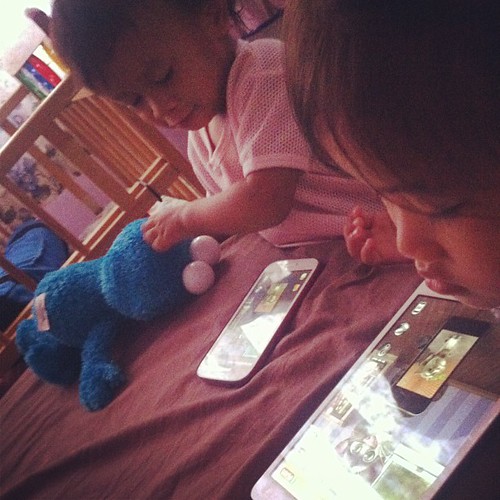
7. **The Evolution of Core Apps: Beyond the First Roar**
Having established a solid foundation with the original *Talking Tom Cat* app, Outfit7 didn’t rest on its laurels; it embarked on a strategic journey of expanding and diversifying its app offerings. This evolutionary phase saw the introduction of sequels and spin-offs that built upon the core interactive elements while introducing new layers of engagement. *Talking Tom 2*, released in 2011, stands as a prime example, refining the original experience with improved graphics and additional features, demonstrating a commitment to continuous enhancement for its burgeoning user base.
Beyond direct sequels, Outfit7 explored creative new formats that leveraged the established character personalities. *Talking News*, an app from 2011, ingeniously cast Talking Tom and Talking Ben as TV news anchors. This innovative concept allowed for a dynamic interplay between the characters, who would not only repeat user recordings but also engage in humorous pranks with each other, adding a new dimension of entertainment and showcasing their distinct personas in a narrative setting.
The franchise further broadened its appeal by giving individual characters their own spotlight. The *Talking Ginger* app, launched in 2012, focused on the mischievous kitten, allowing users to interact with him in fun scenarios like getting him ready for bed. Similarly, *Talking Angela*, also released in 2012, put the spotlight on Tom’s glamorous girlfriend. While *Talking Angela* later became the subject of an unsubstantiated mudslinging campaign, its widespread adoption highlighted the character’s popularity and the app’s engaging features.
These initial spin-off apps paved the way for more refined character-centric experiences, such as *Talking Ginger 2* (originally *Ginger’s Birthday*) in 2013, which allowed users to celebrate Ginger’s birthday. This continuous cycle of development, iteration, and expansion proved crucial in maintaining user interest and broadening the interactive possibilities beyond the initial talkback mechanic, solidifying the franchise’s presence across diverse mobile entertainment categories.
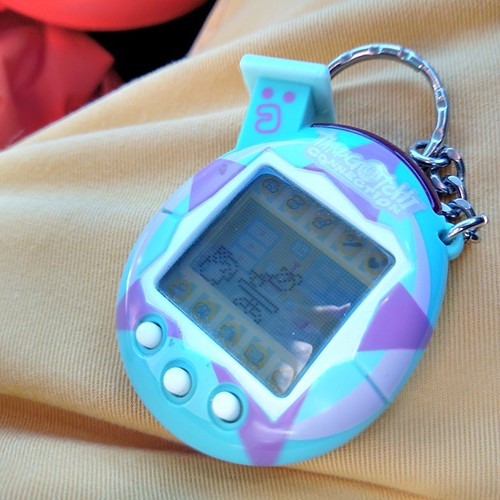
8. **Virtual Pet Phenomena: The My Talking Tom & Angela Era**
A significant pivot in the Talking Tom & Friends franchise came with the introduction of the virtual pet game genre, which revolutionized user engagement by fostering deeper emotional connections with the characters. This was spearheaded by *My Talking Tom*, a landmark title released on November 11, 2013. This game moved beyond simple interaction, allowing users to adopt Tom as a baby kitten and nurture him through various stages of growth, offering a much richer, long-term gameplay experience.
*My Talking Tom* introduced comprehensive virtual pet mechanics, enabling players to feed, bathe, play with, and put Tom to sleep, essentially taking on the role of a caretaker. Users could also rename and customize Tom with a wide array of outfits and accessories, adding a personal touch that significantly enhanced player investment. This innovative approach transformed Tom from a fleeting interactive character into a beloved digital companion, a strategy that proved incredibly successful in driving sustained user loyalty and daily engagement.
The success of this virtual pet model was quickly replicated with other popular characters. *My Talking Angela*, released in 2014, offered a similar immersive experience for fans of Tom’s fashionable girlfriend. Players could care for Angela, watch her grow, and personalize her appearance, further extending the franchise’s reach within the virtual pet genre. This dual-character strategy ensured that the engaging virtual pet mechanics appealed to a broader demographic, catering to different character preferences.
Continuing this successful formula, *My Talking Hank* was introduced in 2016, allowing users to care for the laid-back dog, Hank. The enduring popularity of this sub-genre led to its significant relaunch as *My Talking Hank: Islands* in 2023, with a global release in 2024. These virtual pet titles have been instrumental in establishing the franchise as a leader in interactive character experiences, demonstrating a profound understanding of how to build lasting connections with a global audience through nurturing gameplay and endless customization.

9. **Genre Diversification: Action, Puzzles, and Strategy Games**
The Talking Tom & Friends franchise consistently demonstrated its versatility by venturing beyond its signature talkback and virtual pet mechanics into a diverse array of gaming genres. This strategic diversification allowed Outfit7 to capture different segments of the mobile gaming market, offering experiences that ranged from fast-paced action to thoughtful puzzles and strategic challenges. It was a clear move to prove the characters’ appeal transcended a single type of interaction.
Among the most popular ventures into new genres were the endless runner games. *Talking Tom Gold Run*, launched in 2016, put players in a thrilling chase against the mischievous raccoon robber, Roy Rakoon, collecting gold bars along the way. This proved to be a highly addictive format, capitalizing on quick reflexes and continuous progression. The success was reiterated with *Talking Tom Hero Dash* in 2019, which reimagined the characters as superheroes battling the Rakoonz, bringing a fresh narrative to the runner genre.
The franchise also explored other engaging game types. Racing enthusiasts found joy in *Talking Tom Jetski* (2015) and its sequel *Talking Tom Jetski 2* (2018), where players raced jet skis with Tom or Angela, completing missions and navigating dynamic courses. For fans of more cerebral gameplay, puzzle games like *Talking Tom Bubble Shooter* (2015) and *Talking Angela Color Splash* (2017), a match-3 title, offered challenging yet accessible experiences, proving the characters could thrive in various gameplay styles.
Outfit7 even delved into strategic gameplay with titles like *Talking Tom Camp* (2017), a strategy game where players built camps and attacked enemies, and *Talking Tom Pool* (2017), which involved building a waterpark. While some of these titles have since been discontinued, their existence highlights the continuous experimentation and broad creative ambition behind the franchise. This willingness to explore new mechanics ensured that the Talking Tom & Friends universe remained fresh and exciting, providing engaging experiences for every type of mobile gamer.
This commitment to diverse gameplay also included other endless runners and jumpers such as *Talking Tom Candy Run* (2018), *Talking Tom Cake Jump* (2018), *Talking Tom Jump Up* (2018), and *Talking Tom Time Rush* (2021), alongside match-3 games like *Talking Tom Fun Fair* (2019). Each offered unique twists on popular mobile game formats, ensuring that the characters remained at the forefront of varied interactive entertainment.

10. **The Animated Universe Expands: Web Series Success**
As the interactive apps and games garnered billions of downloads, Outfit7 wisely recognized the potential for its beloved characters to thrive in narrative formats, leading to the strategic expansion into animated web series. This move transformed the Talking Tom & Friends from mere interactive characters into story-driven personalities, further cementing their global icon status and deepening user engagement. It’s a testament to the power of transmedia storytelling in the digital age.
The first foray into animated content was *Talking Friends*, produced by Disney Interactive Studios, which ran on YouTube from June to August 2012 for 10 episodes. This series provided the initial glimpse into the characters’ lives outside of direct user interaction, setting the stage for more ambitious narrative projects. It was an early signal that these characters had the charisma to carry full-fledged stories.
The franchise truly blossomed with the launch of the *Talking Tom & Friends* animated series in December 2014. This flagship series, later simply known as *Talking Tom & Friends*, explored the antics and adventures of Tom and his core group of friends. Its success was marked by multiple seasons and production by reputable animation studios like ARX Anima and People Moving Pixels, indicating a significant investment in high-quality storytelling that resonated with a vast audience.
Beyond the main series, Outfit7 developed diverse animated content to cater to different tastes. *Talking Tom Shorts*, an ongoing web series, adopted a unique style with no character dialogue, relying instead on slapstick comedy and visual storytelling, often revolving around the daily lives of Tom, Ben, Angela, Ginger, and Hank. This format highlighted the universal appeal of their physical humor, transcending language barriers.
Further enriching the animated universe were series like *Talking Tom and Friends Minis* (2016-2018) and *Talking Tom Heroes* (2019-2021). *Talking Tom Heroes* specifically cast the characters as superheroes, battling villains and saving the day, showcasing a creative expansion of their personas into action-adventure narratives. This varied portfolio of animated content ensured that fans could experience the Talking Tom & Friends universe through multiple engaging lenses, fostering a rich, multi-layered connection.
Additionally, the upcoming *Talking Tom Heroes: Suddenly Super*, slated for 2025, promises to continue this exciting trend of animated storytelling, proving that the narrative potential of these characters is far from exhausted and that Outfit7 remains dedicated to expanding their tales across all media.

11. **Collective Caretaking: The My Talking Tom Friends Innovation**
Building on the immense success of individual virtual pet games like *My Talking Tom* and *My Talking Angela*, Outfit7 introduced a groundbreaking evolution in character interaction with *My Talking Tom Friends*. This game, soft-launched in February 2020 and globally released on June 11, 2020, represented a significant leap forward by allowing players to care for not just one, but an entire household of their beloved talking friends – Tom, Angela, Hank, Ginger, Ben, and Becca.
This “collective caretaking” model transformed the single-character experience into a dynamic ensemble simulation. Players were tasked with managing the needs and activities of all six characters simultaneously, from feeding and bathing to playing and entertaining them. This intricate balance of individual and group interactions created a rich, bustling environment that mirrored the chaotic yet endearing dynamics of a large, lovable family, deepening the sense of connection and responsibility for the players.
The strategic importance of *My Talking Tom Friends* cannot be overstated. It brought the entire core cast under one virtual roof, offering a unified and highly integrated experience that fans had long desired. This approach maximized the appeal of each character’s unique personality within a shared, interactive space, encouraging players to discover new interactions and stories as the friends lived and played together. It was a masterstroke in user engagement, fostering long-term loyalty by providing a comprehensive sandbox for character interaction.
The game’s soft launch demonstrated Outfit7’s meticulous approach to development and refinement, ensuring that the complex multi-character mechanics were polished before a global rollout. Its subsequent worldwide success validated the concept, proving that the collective charm of the Talking Friends resonated strongly with audiences hungry for a more integrated and expansive virtual pet experience. This title stands as a testament to Outfit7’s continuous innovation in character-driven mobile entertainment.
Following its impressive reception, the franchise is set to continue this successful formula with *My Talking Tom Friends 2*, promising even more integrated fun and expanded interactive opportunities for players and their favorite digital companions. This evolution solidifies Outfit7’s position as a leader in creating engaging, long-lasting virtual worlds.

12. **Glimpse into Tomorrow: AI Integration and Future Horizons**
The Talking Tom & Friends franchise, while celebrated for its past innovations, is firmly looking towards the future, especially in the realm of artificial intelligence and advanced digital experiences. Outfit7’s forward-thinking approach ensures that the beloved characters remain at the cutting edge of mobile entertainment, continually evolving to meet new technological paradigms and user expectations. This commitment to innovation is a hallmark of enduring digital empires.
A prime example of this future-forward strategy is *Talking Ben AI*. Soft-launched in South Africa, Slovenia, and Cyprus on August 29, 2023, for Android, this app features Ben as a virtual assistant capable of responding to users’ queries using AI. This represents a significant departure from traditional interactive apps, positioning Ben not just as a playful character, but as a helpful and intelligent digital companion, showcasing the potential for AI to enhance character engagement in meaningful ways.
The integration of AI into the franchise demonstrates Outfit7’s understanding that sustained relevance in the digital landscape requires embracing emerging technologies. By allowing characters to interact in more sophisticated, context-aware ways, they are laying the groundwork for even deeper and more personalized user experiences. This move extends the characters’ utility beyond entertainment, hinting at a future where our digital companions can genuinely assist us.
Looking further ahead, Outfit7 has already teased exciting new projects that promise to expand the Talking Tom & Friends universe. *Talking Tom & Friends: World*, a 2D video game slated for 2025, indicates a fresh take on gameplay and visuals. Concurrently, *Talking Tom Heroes: Suddenly Super*, an animated series also set for 2025, signals a continued investment in narrative content, promising new adventures and expanded storylines for the heroic team.
These upcoming initiatives, coupled with the strategic dabbling in AI, underscore Outfit7’s unwavering commitment to evolving the franchise. It’s not just about creating new games or shows, but about reimagining how users interact with their digital friends, ensuring that Tom, Angela, Ben, and the entire crew remain relevant, engaging, and at the forefront of mobile innovation for years to come. The future of Talking Tom & Friends is clearly one of dynamic growth, smart technology, and endless possibilities for its billions of fans worldwide.



